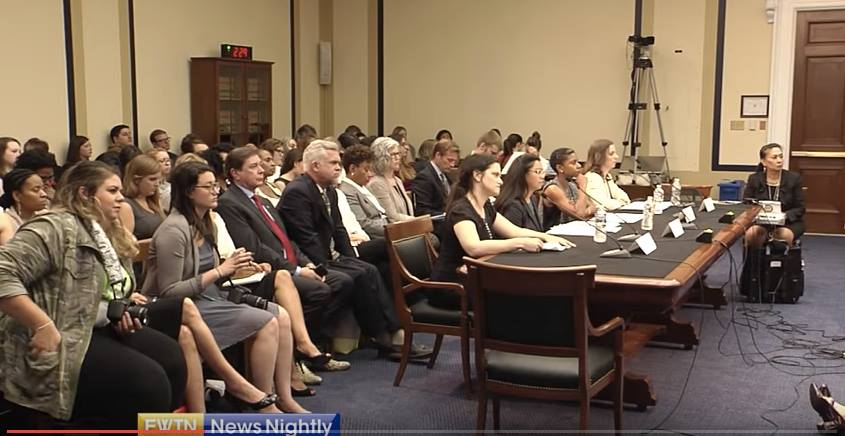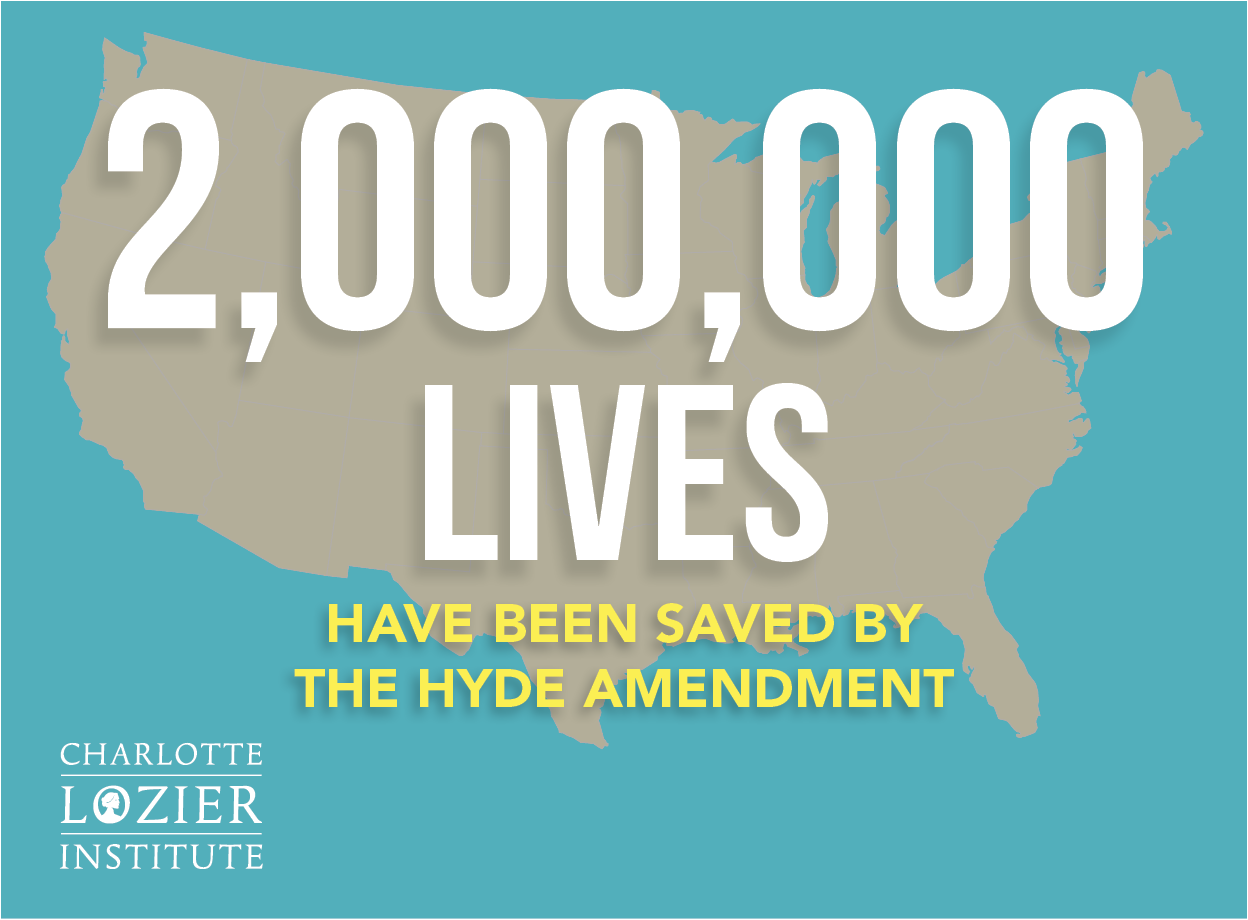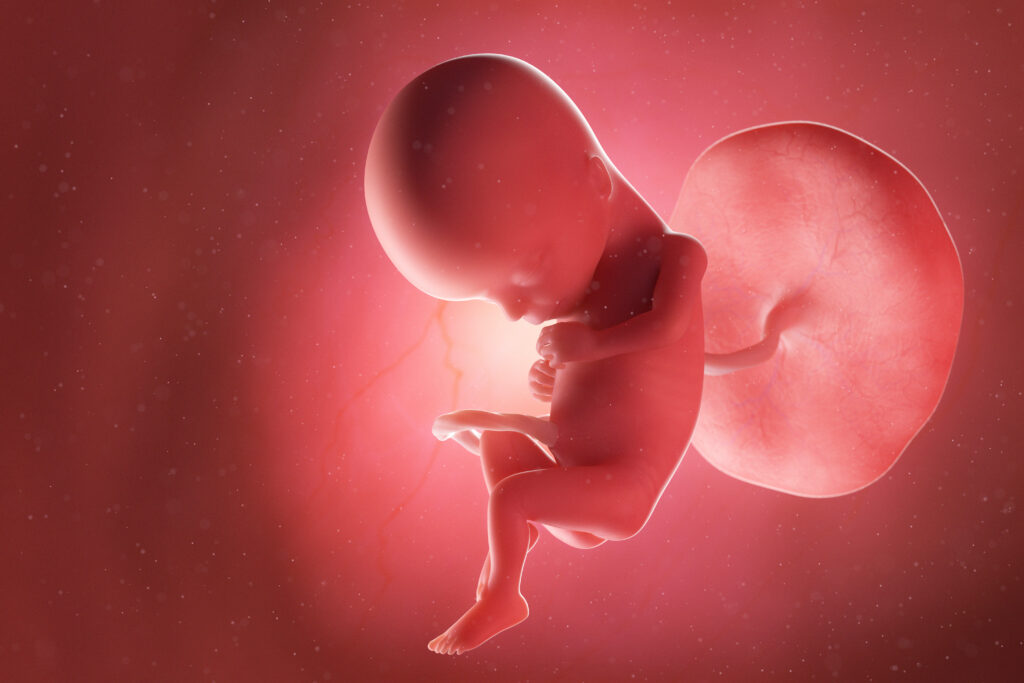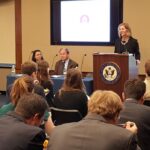Written Testimony of Genevieve Plaster, M.A., in Support of Making the Hyde Amendment Permanent Law

On Friday, September 23, 2016, the U.S. House of Representatives Judiciary Committee held a public hearing, “The Ultimate Civil Right: Examining the Hyde Amendment and the Born Alive Infants Protection Act,” which was hosted by the Subcommittee on the Constitution and Civil Justice.
Charlotte Lozier Institute Senior Policy Analyst Genevieve Plaster, M.A., submitted the following written testimony in support of making the Hyde Amendment, which largely prohibits federal Medicaid funds from paying for abortions, permanent law. In her testimony, Plaster highlights new research by CLI associate scholar, Michael New, Ph.D., revealing that the Hyde Amendment has saved more than two million lives since its first enactment in 1976—over 60,000 lives per year on average. One out of every nine children born to a mother on Medicaid since 1976 has the Hyde Amendment to thank.
Other prolife witnesses at the hearing chaired by Representative Trent Franks (R-AZ) were Giana Jessen, an abortion survivor, and Arina Grossu, M.A., Director of the Center for Human Dignity at Family Research Council.

To view testimony as PDF, please see “Written Testimony of Genevieve Plaster, M.A., in Support of Making the Hyde Amendment Permanent Law”

Written Testimony of Genevieve Plaster, M.A.
Senior Policy Analyst, Charlotte Lozier Institute
Hearing of the U.S. House Judiciary Committee,
Subcommittee on the Constitution and Civil Justice
Regarding “The Ultimate Civil Right: Examining the Hyde Amendment and the Born Alive Infants Protection Act”
September 23, 2016
Chairman Franks, Ranking Member Cohen, and Distinguished Members of the Subcommittee:
Thank you for inviting me to testify before your subcommittee during this hearing on “The Ultimate Civil Right: Examining the Hyde Amendment and Born Alive Infants Protection Act.”
My name is Genevieve Plaster, and I am a senior policy analyst for the Charlotte Lozier Institute, a research and education resource in Washington, D.C. Today, I will focus on the Hyde Amendment and its measurable impact over the past 40 years.
Background
The Hyde Amendment is an appropriations rider that prohibits the use of federal funds for elective abortion or for health benefits coverage that includes elective abortion.[1] As a rider, it is not a permanent law, but it has been passed with bipartisan support in every federal funding bill since 1976. Amidst legal challenges in its early years, the Hyde Amendment was re-affirmed as constitutional in 1980 by the U.S. Supreme Court in Harris v. McCrae.[2]
Though a financial policy, the most important measurement of the Hyde Amendment’s real-world effects has not been dollars saved, but lives saved.
By saying the Hyde Amendment has “saved lives,” I am referring to the prevented abortions due to women deciding to continue their pregnancies and give birth to their children in the absence of public funding. More than 20 peer-reviewed studies published in academic journals have found a reduction in abortion rates following the enactment of the Hyde Amendment or other laws that limit public funding of abortion. Numerous studies examining state data show not only the abortion rate reduction, but also an increased birthrate. In fact, the Guttmacher Institute – formerly Planned Parenthood’s research arm which still received millions of dollars from the abortion business after splitting – conducted its own literature review on the impact of the Hyde Amendment on abortion rates in 2009. Because the decline in abortion was so clear, even the study’s authors were forced to acknowledge that the “best studies…found that 18-37 percent of pregnancies that would have ended in Medicaid-funded abortion were carried to term when funding was no longer available.”[3] (Emphasis mine) We then rightly acknowledge that the Medicaid-funded births of these children (though the oldest are now 40 years old) are “lives saved” due to the Hyde Amendment.
Quantitative Impact of the Hyde Amendment
In a forthcoming study, Charlotte Lozier Institute associate scholar, Dr. Michael J. New, calculates the best estimate for how many lives have been saved by the Hyde Amendment. With a rigorous methodology, Dr. New identifies solid, appropriately designed studies that examine the decrease of abortion rates following the enactment of a public funding limitation. Finding the average rate of decrease to be 1.52, he then applies this rate to state-specific data – namely, the number of years and months each state has had an implemented Medicaid funding limitation for abortion, as well as each state’s abortion rate.
The major conclusion of this groundbreaking study is that the Hyde Amendment has saved more than two million lives since 1976. Two million Americans – that’s approximately the entire population of the city of Houston, the 4th largest city in the U.S.[4]; two million Americans is the entire population of the state of New Mexico[5]; two million Americans is the sum of the entire combined populations of Rhode Island[6] and Delaware[7].
From another angle, the study also calculated that the Hyde Amendment saves approximately 60,000 lives each year.
Among just the seven states that each of you and your constituents call home, the Hyde Amendment has saved approximately 700,000 lives since its enactment. That is, in:
- Arizona – 57,000 lives were saved;
- Florida – 172,000;
- Iowa – 34,000;
- Ohio – 138,000;
- Tennessee – 69,000;
- Texas – highest number of lives saved at over a quarter million (258,000); and finally in
- New York – regretfully, no lives have been saved due to the Hyde Amendment since the state has had state Medicaid-funded abortion from 1976 to 2015.
This real-world impact bears repeating: In just these seven states, 700,000 Americans have been saved by the Hyde Amendment.
From another perspective, CLI scholar Dr. New explains that we can also say one in nine people born under Medicaid was saved thanks to the Hyde Amendment. In three separate studies examining Illinois, Ohio, and Texas, the state’s Medicaid-birthrates increased after implementation of the Hyde Amendment by an average of 12.8 percent. If, hypothetically, there were 100 babies born while abortion was still funded under Medicaid, in the year following enactment of the funding limitation, there would be an additional 13 babies born that year. These 13 additional babies born out of a total 113 come to be approximately one in nine lives.
Qualitative Impact of the Hyde Amendment
Lest we lose sight of the qualitative reality of two million lives, let us consider this brief story of Claire, a young woman who experienced an unplanned pregnancy at age 17 and said in a recent news article, “I felt hopeless and alone.”[8] She explained that if Medicaid funding for an abortion had been available, it would have been tempting to go ahead and have an abortion. Instead, she reached out for support, was accompanied to a pregnancy care center where she saw the first ultrasound of her son, and decided to continue her pregnancy. Now, a year later, Claire reflects: “I don’t know what I would do without him… That’s my baby.”
Of the two million lives saved by the Hyde Amendment, one can only wonder how many of their mothers were in similar situations.
Conclusion
In conclusion, the Hyde Amendment:
- has enjoyed bipartisan support for 40 years,
- was re-affirmed as constitutional in 1980,
- enjoys support from nearly seven in 10 Americans[9] (including even 51 percent of those self-identifying as “pro-choice”[10]; 44 percent of Democrats[11]; 65 percent of African Americans; 61 percent of Latinos; 58 percent of millennials; and 63 percent of women[12]); and
- has saved an estimated two million lives.
For these compelling reasons, the protective language of the Hyde Amendment should not only be retained as enforced policy, but be codified as a permanent law.
Should the Hyde Amendment be repealed in the near future, we now cannot say we were ignorant that – based on comprehensive and current research – approximately 60,000 lives are expected to be lost in the first year alone. Instead, let us continue to support this longstanding bipartisan policy which respects individual conscience of the taxpayer, and has been shown to protect millions of lives.
Thank you again for holding today’s hearing on these crucial issues.
[1]Consolidated Appropriations Act, 2016, Division H, Title V, Sec 506 to 507 (c), accessed at: http://docs.house.gov/billsthisweek/20151214/CPRT-114-HPRT-RU00-SAHR2029-AMNT1final.pdf
[2] Harris v. McRae, 448 U.S. 297 (1980)
[3] Henshaw SK et al. Restrictions on Medicaid Funding for Abortions: A Literature Review, Guttmacher Institute, June 2009, accessed at: https://www.guttmacher.org/sites/default/files/report_pdf/medicaidlitreview.pdf
[4] http://www.census.gov/quickfacts/table/PST045215/4835000,00
[5] http://www.census.gov/quickfacts/table/PST045215/35,4835000,00
[6] http://www.census.gov/quickfacts/table/PST045215/44,35,4835000,00
[7] http://www.census.gov/quickfacts/table/PST045215/44,35,4835000,00
[8] Dean J. Nowhere to Hyde?, World Magazine Vol. 31 No. 19, September 17, 2016, accessed at: https://world.wng.org/2016/09/nowhere_to_hyde
[9] Abortion in America, Knights of Columbus/Marist Poll, 2016, accessed at: http://www.kofc.org/un/en/resources/communications/abortion-america-january2016.pdf “Please tell me if you strongly support, support, oppose, or strongly oppose using tax dollars to pay for a woman’s abortion.”
[10] Ibid.
[11] http://www.kofc.org/un/en/resources/communications/kofc-arist-poll-banner072016.pdf
[12] http://www.kofc.org/un/en/resources/communications/kofc-arist-poll-bannerb-072016.pdf

























